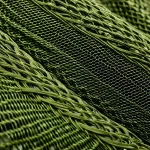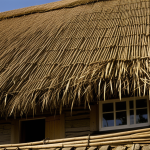Essential Cleaning Techniques for Outdoor Wooden Furniture
Maintaining outdoor wood furniture cleaning effectively hinges on a solid UK maintenance routine tailored to cope with damp and variable weather. Begin with a gentle wash using a soft brush or cloth to remove loose dirt and debris. For light cleaning, mix mild soap with warm water—this is safe for most wood types and readily available across the UK.
When addressing more stubborn stains, such as those caused by algae or mildew, apply a diluted solution of white vinegar or a wood-specific cleaner recommended for its gentle action. Remember, using abrasive cleaners or high-pressure washing can damage the wood surface and strip protective layers.
Also read : Top strategies for tackling moisture build-up in your seaside cornish residence
To prevent staining and retain the furniture’s charm, make it a habit to rinse off spills quickly and avoid letting moisture sit prolonged. If stains have already set in, carefully sanding the area can restore the wood’s appearance and smoothness. Refinishing with oils or sealants after cleaning will enhance durability and highlight the natural grain.
By adopting these cleaning tips, furniture owners achieve not only a fresher look but prolong the lifespan of their investment. Emphasis on regular, proper cleaning is crucial as UK conditions often challenge outdoor wood with moisture and grime buildup.
Topic to read : Transform your classic edinburgh townhouse: a seamless smart thermostat installation journey
Weatherproofing and Protecting Wood in the UK Climate
Protecting outdoor wood furniture from the notoriously wet and changeable UK climate begins with weatherproofing wood effectively. The primary goal is to prevent weather damage caused by rain, humidity, and frost. Applying suitable wood sealants is essential because they create a barrier that repels moisture while allowing the wood to breathe, reducing the risk of swelling and cracking.
In the UK, popular wood protection UK products include oil-based sealants, water-repellent preservatives, and specialized outdoor varnishes. These can often be found in garden centers or DIY stores nationwide and are tailored to withstand damp conditions. For instance, teak or hardwood furniture benefits from penetrating oils that nourish the wood, whereas softer woods may require a water-based treatment to avoid buildup.
Timing is also crucial: the best moment to apply sealants is during dry, mild weather. This ensures absorption and curing without trapping moisture inside. Regular reapplication—usually annually or bi-annually—fits well into a UK maintenance routine for outdoor wood furniture cleaning, supporting ongoing durability.
Combining proper cleaning with timely weatherproofing extends your furniture’s life and enhances its natural beauty. Consistent care not only protects physically but also refreshes the wood’s appearance, making weatherproofing a vital step in any maintenance plan.
Essential Cleaning Techniques for Outdoor Wooden Furniture
A thorough outdoor wood furniture cleaning routine is essential to uphold both appearance and durability within a UK climate. Start with dry dusting or brushing to eliminate loose debris. Follow by washing with a mild detergent mixed in warm water—effective for various wood types and gentle enough to avoid surface damage.
For tougher grime or biological growth like algae, use a diluted white vinegar solution or a commercially available, UK-suitable wood cleaner. These options help prevent staining without harsh chemicals that could erode wood fibers. After cleaning, rinse thoroughly with clean water to remove residues that may attract dirt.
Sanding is a valuable step after stubborn stains persist, smoothing minor surface imperfections and preparing wood for oil or sealant application. The choice of cleaning solution also depends on the wood species: for instance, teak generally resists moisture better but still benefits from oil-based cleaners, while softer woods respond well to milder formulations.
Regular practice of these cleaning tips, integrated into your UK maintenance routine, ensures the furniture’s surface remains vibrant and strong. By addressing stains promptly and using the appropriate cleaning agents, you contribute directly to restoring wood’s appearance and extending outdoor furniture life, safeguarding your investment throughout changing weather.
Essential Cleaning Techniques for Outdoor Wooden Furniture
Mastering outdoor wood furniture cleaning starts with a clear, step-by-step UK maintenance routine suited to local weather and wood types. Begin by dry brushing surfaces to remove dust and loose debris. Next, use a mild soap mixed with warm water—this gentle solution caters well to various woods and avoids damaging finishes.
For woods like teak, oil-based cleaners enhance natural oils while cleaning; softer woods benefit from milder detergents to maintain integrity. When it comes to prevent staining, prompt removal of spills is key, but for tougher issues like algae or mildew, a diluted white vinegar solution or a wood-specific cleaner designed for UK conditions works effectively without harsh abrasion.
If stains persist, lightly sanding the affected area restores the surface and prepares it for refinishing. Apply oils or sealants suited to your wood type afterward, which not only protects but aids in restoring wood’s appearance. These treatments should be part of your regular cleaning tips to keep wood vibrant and resilient despite the UK’s damp climate.
Consistent adherence to such routines preserves beauty and durability, making the investment in outdoor wooden furniture worthwhile through every season.
Essential Cleaning Techniques for Outdoor Wooden Furniture
A thorough outdoor wood furniture cleaning routine is vital in the UK’s often damp environment. Begin your UK maintenance routine by dry brushing to remove dirt and dust before applying cleaning solutions. Use mild soap mixed with warm water for most woods, as this solution balances effectiveness with gentleness. For tougher grime or biological stains like algae, a diluted white vinegar solution works well to prevent staining without harming the wood fibers.
Different wood types require tailored care: teak benefits from oil-based cleaners that nourish natural oils, enhancing durability, while softer woods may need gentler detergent blends to avoid damage. After cleaning, rinse thoroughly to remove residue that might attract dirt. When stains persist despite cleaning, lightly sanding the area helps restore wood’s appearance and prepares it for refinishing.
Refinishing with appropriate oils or sealants after cleaning is a key cleaning tip. These treatments boost protection and keep wood looking refreshed. Incorporating this step regularly into your UK maintenance routine ensures long-lasting beauty and resilience. Addressing spills and stains promptly throughout the seasons helps maintain wood’s natural charm despite UK weather challenges.
Essential Cleaning Techniques for Outdoor Wooden Furniture
Proper outdoor wood furniture cleaning depends on using a deliberate UK maintenance routine with products suited to local conditions and wood types. Begin by dry brushing to remove dust and debris. Next, clean with a mild soap diluted in warm water, a solution gentle enough to respect delicate grain yet effective in removing surface grime.
Different woods require tailored attention. For instance, teak furniture benefits from oil-based cleaners that enhance natural oils while supporting restoring wood’s appearance. Softer woods respond better to mild detergent blends to protect fibers and prevent damage. When tackling stubborn stains or biological growth like algae, opt for a diluted white vinegar solution or a specially formulated wood cleaner designed for UK climates to prevent staining safely without abrasion.
After washing, thoroughly rinse to remove any residue that might attract dirt again. Should stains persist, light sanding helps erase blemishes, smooth the surface, and prepare it for refinishing. Apply furniture oils or sealants afterward, which lock in protection while revitalising the wood’s natural beauty—integral cleaning tips that underpin a successful UK maintenance routine.
By managing cleaning attentively and promptly, you not only maintain appearance but extend furniture lifespan despite challenging UK weather.
Essential Cleaning Techniques for Outdoor Wooden Furniture
A thorough outdoor wood furniture cleaning process starts with a clear, methodical UK maintenance routine. First, remove loose debris by dry brushing or dusting. Then, apply a mild soap mixed with warm water—this gentle solution cleans effectively without damaging the wood’s surface. Use products widely available in UK stores to ensure compatibility with local conditions and wood types.
Different woods demand specific care. For example, teak benefits from oil-based cleaners that help maintain natural oils and strengthen the timber. In contrast, softer woods respond better to milder detergents to preserve their fibres. To prevent staining, act quickly on spills and biological growth, such as algae or mildew. A diluted white vinegar solution or a wood-specific cleaner formulated for UK climates works well without abrasive effects that could erode the surface.
When stains persist after cleaning, light sanding is beneficial to remove blemishes and prepare the wood for refinishing. Applying oils or sealants afterwards not only protects but also aids in restoring wood’s appearance, highlighting its natural beauty. Regularly repeating these cleaning tips as part of your UK maintenance routine ensures your furniture remains resilient and visually appealing, despite the challenges posed by Britain’s often damp weather.










